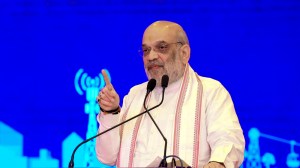Too Alone, Two Together
In the summer of ’69, Vikram Seth, then 17, turned up at the home of his mother’s uncle, in northwest London, seeking room and gua...

In the summer of ’69, Vikram Seth, then 17, turned up at the home of his mother’s uncle, in northwest London, seeking room and guardianship. He had just been awarded a scholarship to study for his A-levels. As he settled himself into a guest room in the attic, he got immersed in the lives of Shanti Uncle and Aunt Henny.
In Seth’s attentive prose, their story gathers all the threads of migration of the century just past. It catches the ambitions and atrocities that carried men and women far from the places of their birth and demanded no more and no less of them than to arrange a sense of belonging in a scaffolding of relationships salvaged from a terrible past.
Both Shanti and Henny were born in 1908. Shanti was born into a family of modest means but modernist aspirations in eastern UP. Those were times when families decided career goals for young ones by counting off the options already availed of by siblings. So Shanti’s eldest brother—and Vikram Seth’s grandfather—said to him, “In our family we have an engineer, an accountant, a judge and a doctor, but no dentist. Why don’t you train to do that?”
So Shanti set off for Berlin in 1931. After a series of temporary accommodations, he found boarding in Henny’s home. Decades later, he remembered her telling her mother, “Don’t take the black man.” That warning aside, Shanti was soon drawn into the family’s social life and was not treated as a mere lodger.
Shanti acquired his degree but found he could not practise, what with the Nazi injunctions against foreigners. He relocated to Edinburgh, hopeful of qualifying to practice in Britain. Henny’s family was Jewish and was soon scattered in a rush of emigrations and deportations.
Henny found refuge in London; her mother and sister were not so fortunate. For Henny, in London during the war years, correspondence with Shanti became almost the sole link to her past life. By then, he had enlisted in Britain’s war effort, serving in Sudan, Egypt, Syria and Italy, where he lost his right arm (he would return to dentistry as a left-hander).
In the ’90s, soon after Henny’s death, Seth decided to write a book on this remarkable couple. He conducted a series of interviews with Shanti.
These letters trace Henny’s efforts to know of her mother and sister’s fate; her exertions to get compensation from the German government; her revived links with old friends from Berlin and what must have been a difficult task of separating friendships worth preserving from those with men and women who’d made expedient compromises during the Nazi years.
To the narrative of these two lives, Seth brings his foremost skill as a writer—his ability to convey the circumstances of relationships. And in this non-fictional narrative, after two very different novels (A Suitable Boy and An Equal Music), Seth’s respect for the dignity of his characters keeps Two Lives from being intrusive.
In his novels, this respect sometimes limited his characters’ emotional profiles; here it gives them ownership of their own stories. It also lattices their partnership with the movements and histories of the 20th century.
Photos





- 01
- 02
- 03
- 04
- 05


























